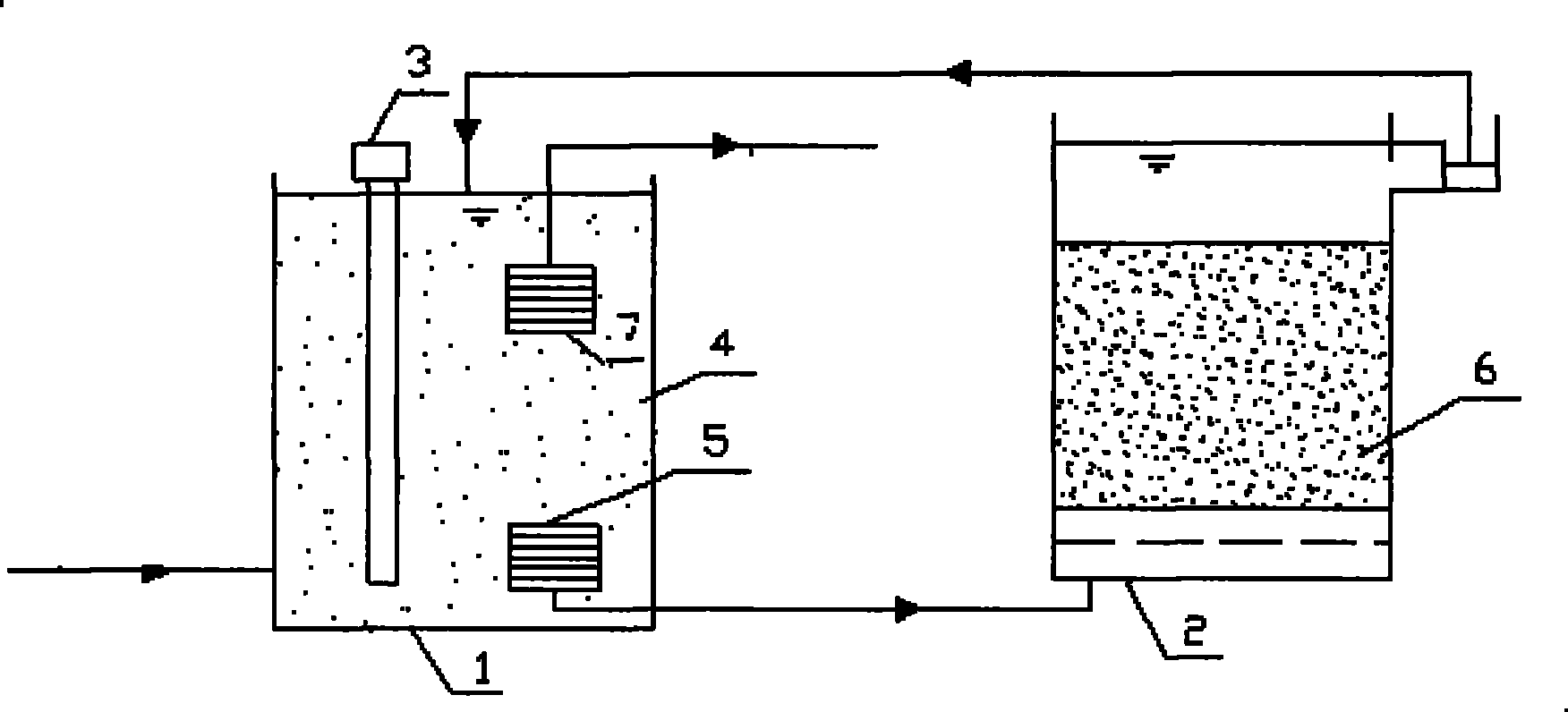Photocatalysis and biotreatment combined drinking water treatment method
A technology of drinking water treatment and photocatalysis, which is applied in the field of water treatment, can solve the problems of poor ammonia nitrogen removal effect, high cost, and excessive microbial indicators in effluent, and achieve good removal effect, improved efficiency, and high water treatment efficiency.
- Summary
- Abstract
- Description
- Claims
- Application Information
AI Technical Summary
Problems solved by technology
Method used
Image
Examples
specific Embodiment approach 1
[0009] Specific Embodiment 1: The drinking water treatment method of this embodiment combined with photocatalysis and biology is carried out according to the following steps: 1. Use a pump to press the raw water into the photocatalytic reactor, and then add the photocatalyst to the photocatalytic reactor Mix evenly, control the pH value of the photocatalytic reactor to 2~12, the hydraulic retention time is 10min~480min, and the light source intensity is 0.1~20mW / cm 2 , where the amount of photocatalyst added is 0.1-5g of photocatalyst per liter of photocatalytic reactor volume; 2. The raw water after photocatalytic treatment is filtered by the lower membrane module of the photocatalytic reactor and enters the biofilter for biological treatment. Treatment, control the filtration rate of the biofilter to 1-20m / h, and then effluent after being filtered by the filter material of the biofilter; 3. Return the effluent from step 2 from the upper part to the photocatalytic reactor for ...
specific Embodiment approach 2
[0011] Embodiment 2: This embodiment is different from Embodiment 1 in that the pH value of the photocatalytic reactor in Step 1 is 4-10. Other steps and parameters are the same as those in Embodiment 1.
specific Embodiment approach 3
[0012] Embodiment 3: The difference between this embodiment and Embodiment 1 is that the hydraulic retention time of the photocatalytic reactor in Step 1 is 15 min to 360 min. Other steps and parameters are the same as those in Embodiment 1 or Embodiment 2.
PUM
 Login to View More
Login to View More Abstract
Description
Claims
Application Information
 Login to View More
Login to View More - R&D
- Intellectual Property
- Life Sciences
- Materials
- Tech Scout
- Unparalleled Data Quality
- Higher Quality Content
- 60% Fewer Hallucinations
Browse by: Latest US Patents, China's latest patents, Technical Efficacy Thesaurus, Application Domain, Technology Topic, Popular Technical Reports.
© 2025 PatSnap. All rights reserved.Legal|Privacy policy|Modern Slavery Act Transparency Statement|Sitemap|About US| Contact US: help@patsnap.com



